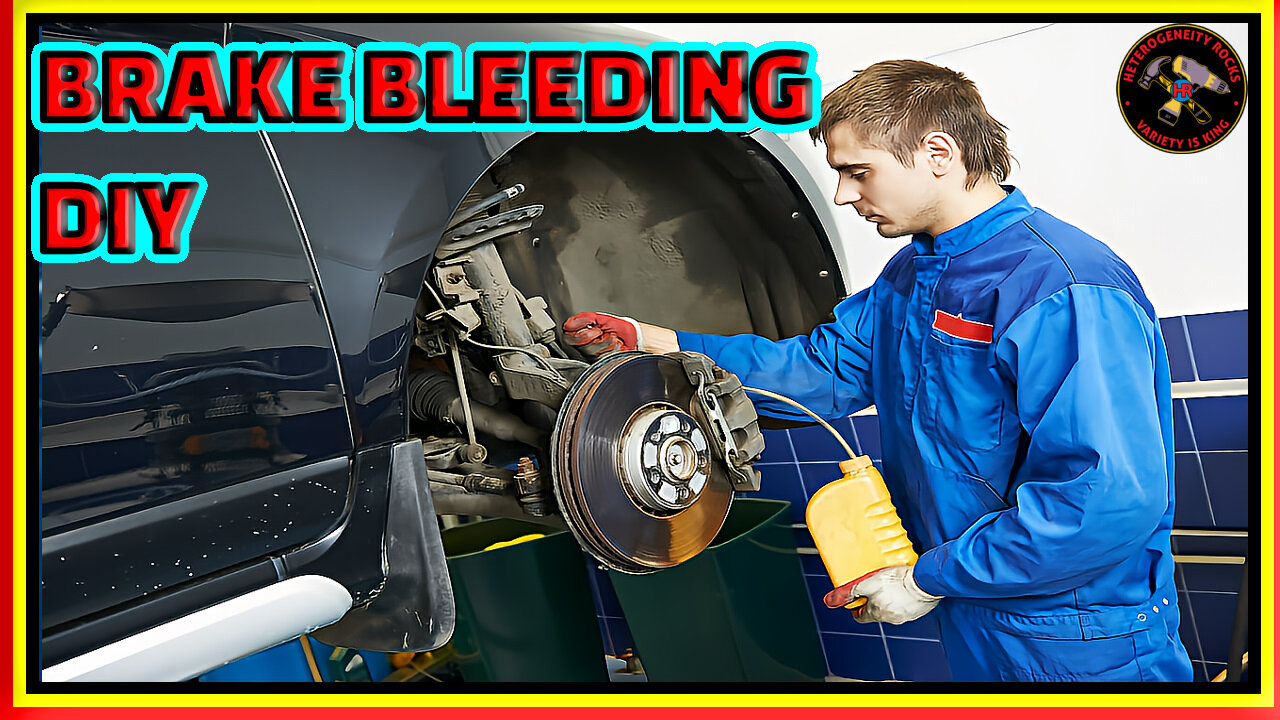Premium Only Content

How to Bleed and Replace Your Brake Fluid alone #brakes #autorepair
How to Bleed and Replace Your Brake Fluid Yourself. Bleeding your brakes not only removes air bubbles for optimal performance but also includes replacing brake fluid, which deteriorates over time, ensuring consistent braking efficiency and safety on the road. Regular maintenance prevents brake failure, reduces stopping distances, and safeguards against accidents, making it essential for every driver's peace of mind.
So, here's the scoop on bleeding brakes by yourself:
First off, you got to get in the driver's seat. I usually pump the brake pedal a few times to get things started. Then, I jam a piece of wood or something similar between the seat and the pedal to keep it pressed down. Moving the seat forward helps to make sure the pedal stays all the way down.
Once the pedal is down as far as it can go, it's time to get under the car. Loosen the bleeder screw on the brake caliper to let the fluid and air out. When the fluid stops, tighten it back up.
Now, this setup I use is my homemade brake bleeder. It's just a bottle with a hole in the top for a hose, and a small vent hole. Pretty simple, but effective. The bleeder screws usually cooperate, except for the rear ones – those can be a pain. If they give you trouble, just replace them; they're cheap.
If you have someone helping, the process gets a bit easier. Have them pump the pedal and hold it to the floor while you loosen the bleeder screw. Once the fluid stops, tighten it back up and repeat until there's no more air in the line.
Keep an eye on the brake fluid level in the reservoir, topping it up as needed. You don't want to run it dry and get air in the ABS.
When you're done, check everything again to make sure it's tight and topped up. And that's it! It's not hard, but it does take some patience.
Remember, if you're using a one-person bleeder kit, make sure it's airtight and has the right fittings. Pump it up, and it'll pull the fluid out without needing anyone to press the pedal.
Last but not least, don't over-tighten those bleeder screws. They're important, but they don't need to be super tight.
Alright, that's the lowdown on bleeding brakes. Easy peasy, just make sure you replace any rusty bleeder screws, and you're good to go!
Thanks for tuning in! If you found this helpful, hit that subscribe button to stay in the loop and help out the channel. Happy wrenching!
In this instructional video, I walk you through the process of bleeding brakes on a vehicle. Here’s how I do it step-by-step.
First, I push down the brake pedal several times and then insert my homemade brake bleeder kit between the seat and the pedal. My kit is simple: it’s just a container with a hole for a hose and a vent hole to collect brake fluid.
The main steps I follow include:
Pushing the brake pedal down and securing it.
Loosening and then tightening the bleeder screws to allow air and fluid to escape.
Making sure there's always enough brake fluid in the system to prevent air from entering the ABS system.
I can't stress enough the importance of not over-tightening the bleeder screws. If they’re rusty, I suggest replacing them. It’s pretty straightforward, and it’s something you don't need to do often, so replacing them when necessary is a good idea.
Using a brake bleeder kit is especially handy when I’m working alone because it allows me to bleed the brakes without needing someone else to pump the pedal. If you get your bleeder screws loosened, it’s easy-peasy.
In the video, I also encourage viewers to subscribe to my channel. It helps the YouTube algorithm know that you like this sort of content, and it pushes the video out to more wonderful people like you.
Overall, I provide a clear and detailed guide on bleeding brakes, making it accessible even for those with minimal mechanical experience. Thanks for watching, and happy bleeding! The videos on my channel are purely for entertainment. I am not liable for any content displayed or discussed here. For advice or information, please seek a professional.
#HowbleedandReplaceYourBrakeFluidYourself #BrakeBleedingTips #bleedingbrakes #carmaintenance
00:00 Blocking brake pedal trick
00:39 Bleeding brakes
02:37 Conclusion
-

Tundra Tactical
4 hours ago $0.33 earned$3200 ZEV HEARTBREAKER Contest!!! TONIGHT On The Worlds Okayest Gun Live Stream
25.8K -
 LIVE
LIVE
IcyFPS
2 hours ago🟢SOLO LEVELING LIVE 🟢 PREMIUM PAYDAY | SUNDAY GUNDAY |
144 watching -
 LIVE
LIVE
Damysus Gaming
2 hours agoWeaving into the Deep South: South of Midnight First Play!
123 watching -
 LIVE
LIVE
EricJohnPizzaArtist
4 hours agoAwesome Sauce PIZZA ART LIVE Ep. #43: Misses Ma’am!
198 watching -
 54:59
54:59
Stephen Gardner
8 hours ago🔥Biden insider: Obama was Pulling Strings | Trump Derangement is RAGING!
71.8K254 -
 LIVE
LIVE
Delnorin Games
5 hours ago🔴 Live - Star Citizen
360 watching -
 1:07:23
1:07:23
Vedic compatability astrology
3 hours agoDiscover Wisdom from Dr. Andrew Dutta!
18.3K -
 4:52:51
4:52:51
LFA TV
1 day agoLFA TV SHORT CLIPS OF THE WEEK!
71K8 -
 4:12:52
4:12:52
Pepkilla
9 hours agoAI has taken over come with me if you want to live
62.7K2 -
 8:13:39
8:13:39
Grant Cardone
14 hours ago10X Business Summit Day 2
119K1